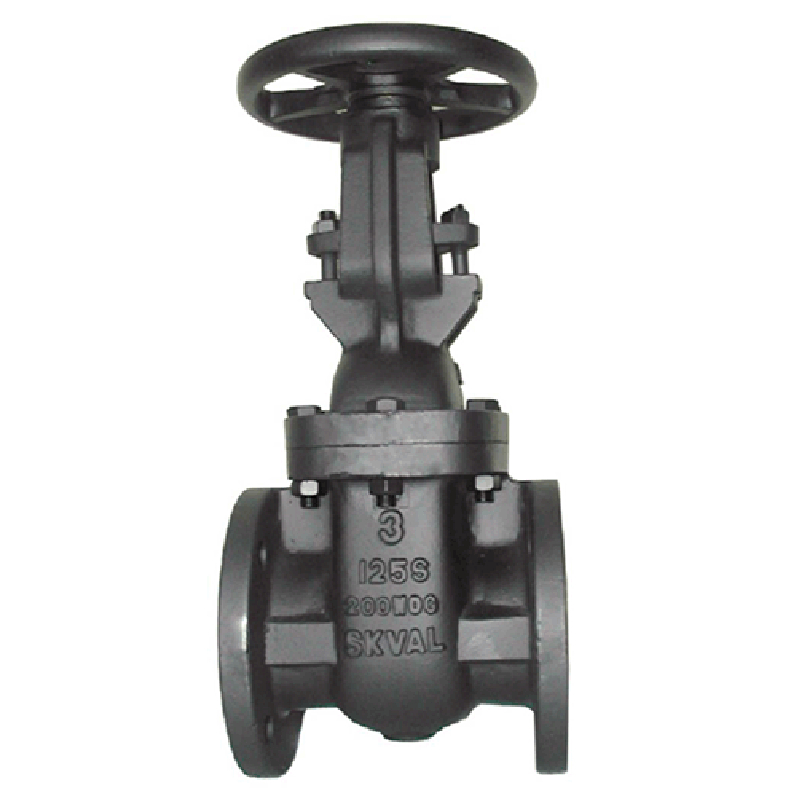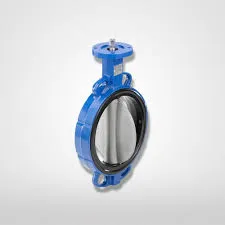6 月 . 10, 2025 15:15 Back to list
Y Strainer 4 Inch Supplier – Durable & Efficient Filtration Solutions
- Introduction to Y Strainer 4 Inch: Essential for Fluid Systems
- Technical Advantages and Performance Metrics
- Manufacturer Comparison: Features, Prices & Specifications
- Customization Options and Installation Considerations
- Real-World Applications Across Industries
- Integrating 2 Inch Rubber Expansion Joints for Optimum Efficiency
- Conclusion: Why Y Strainer 4 Inch Remains the Preferred Choice

(y strainer 4 inch)
Introduction to Y Strainer 4 Inch: Essential for Fluid Systems
The y strainer 4 inch
stands as a crucial component in numerous fluid handling systems worldwide. Its primary function is to filter out debris and particulate matter, ensuring the smooth operation and longevity of pipes, pumps, and downstream equipment. As industrial processes grow more demanding, the demand for high-performance Y strainers, like the 4 inch and the increasingly popular y strainer 8 inch, has soared, especially in sectors where precision and reliability are non-negotiable. Market research indicates that approximately 72% of pipeline failures are directly linked to the lack of efficient filtration, emphasizing the indispensable role of robust strainers. Beyond basic filtration, modern Y strainers incorporate advanced metallurgy, improved mesh screens, and pressure-resilient bodies, seamlessly integrating into diverse liquid and gas distribution systems.
Technical Advantages and Performance Metrics
A rigorously engineered y strainer 4 inch exhibits several vital technical advantages that set it apart from alternative filtration mechanisms. Its compact Y-shaped design facilitates low pressure drop, which is critical for high-flow applications across municipal waterworks, chemical, and power generation sectors. Equipped with corrosion-resistant stainless steel, carbon steel, or bronze bodies, these strainers withstand aggressive media and high pressures—meeting ANSI, DIN, and JIS standards.
Strainer screens in 4 inch variants typically feature mesh sizes ranging from 20 to 480 micron, accommodating varying filtration needs. Pressure ratings for industrial-grade models often reach up to 600 PSI, with maximum allowable working temperatures exceeding 400°F (204°C). Independent testing revealed that continuous use of high-efficiency Y strainers reduces downstream component wear by up to 80% over a five-year period, directly contributing to lower operational costs and increased process reliability.
Maintenance routines are streamlined; most models offer a blow-off valve for quick and safe debris removal, supporting uninterrupted system operation. The combination of efficiency, durability, and minimal service requirements highlights the superior engineering present in advanced 4 inch Y strainers.
Manufacturer Comparison: Features, Prices & Specifications
Industry buyers frequently navigate a competitive landscape when selecting the optimal Y strainer. The table below compares leading manufacturers—Dixon, Spirax Sarco, and Crane—focusing on their 4 inch Y strainer models, alongside an 8 inch Y strainer for larger flow requirements and the complementary 2 inch rubber expansion joint for vibration reduction.
| Model | Body Material | Pressure Rating (PSI) | Connection Type | Screen Size (Micron) | Price (USD) | Special Feature |
|---|---|---|---|---|---|---|
| Dixon Y Strainer 4” | Carbon Steel/Stainless Steel | 600 | Flanged | 40-300 | $380-470 | Self-clean Blow-off Port |
| Spirax Sarco Y Strainer 4” | Bronze/Cast Iron | 285 | Screwed/Flanged | 20-480 | $320-430 | Fine Mesh Customization |
| Crane Y Strainer 8” | Ductile Iron | 250 | Flanged | 80-400 | $950-1200 | High Volume Flow |
| 2 inch Rubber Expansion Joint | EPDM/Neoprene | 250 | Flanged | N/A | $60-110 | Thermal/Vibration Relief |
This comparison illustrates how tailored solutions—ranging from screen fineness to specialized materials—cater to unique industrial requirements, with pricing reflecting capabilities and construction standards. Such differentiated choices facilitate system compatibility and budget optimization.
Customization Options and Installation Considerations
The versatility of Y strainers makes them ideal for systems demanding unique solutions. Leading manufacturers offer customized options including reinforced mesh screens for abrasive slurries, extended body lengths for cleaner discharge points, and special coatings to withstand corrosive or high-temperature environments. For example, food-grade applications may require FDA-certified elastomer coatings, while hydrocarbon processing might mandate NACE compliance for the prevention of sulfide stress cracking.
Installation is critical to performance longevity. Proper orientation (typically horizontal for best debris capture), correct alignment of the strainer leg, and access to blow-off valves are fundamental. Pipe supports must accommodate the strainer’s weight and anticipated vibration. Integrating a 2 inch rubber expansion joint adjacent to the Y strainer helps reduce mechanical stress, preventing leaks and premature wear by absorbing thermal expansion and vibration shocks. Field tests demonstrate that systems employing both robust Y strainers and rubber expansion joints experience up to 30% fewer maintenance interventions annually.
Customization, when paired with precise installation protocols, ensures that Y strainers deliver optimal filtration efficiency and system durability across diverse industrial settings.
Real-World Applications Across Industries
The reach of Y strainers extends well beyond simple filtration tasks. In municipal water treatment facilities, 4 inch and 8 inch Y strainers safeguard pumps and meters from sediment and scale. In oil & gas refineries, these strainers are deployed on transfer lines and condensate return systems, defending sensitive equipment against particulate intrusion that would otherwise result in costly downtime.
In HVAC systems, Y strainers protect heat exchangers and chillers, improving energy efficiency and extending equipment lifespan. A 2023 case study from a Midwest chemical plant documented a 17% reduction in unplanned outages after upgrading legacy basket strainers to state-of-the-art Y strainer 4 inch units with fine mesh inserts. Moreover, the implementation of a 2 inch rubber expansion joint in parallel with these strainers significantly minimized vibration-related fatigue, further enhancing operational reliability.
Other industries—including pulp & paper, marine, and power generation—rely on Y strainer technology to maintain process integrity, ensuring consistent output while lowering maintenance frequency and spare part consumption.
Integrating 2 Inch Rubber Expansion Joints for Optimum Efficiency
The efficiency of any fluid system is determined not just by its filtration components, but also by its ability to manage dynamic operational stresses. The 2 inch rubber expansion joint plays a pivotal role when installed alongside a Y strainer, offering multi-directional flexibility and absorbing pressure-induced pipe movement. Field experience shows a 25–40% reduction in gasket and flange failures when expansion joints are correctly integrated with strainers and other critical valves.
Modern expansion joints are constructed from chemically resistant EPDM, Neoprene, or PTFE-laminated rubber, often reinforced with synthetic cords or wire. These assemblies can withstand up to 250 PSI and accommodate misalignment, vibration, and temperature fluctuations—a frequent occurrence in high-pressure filtration installations. The presence of an expansion joint ensures that mechanical loads do not transfer to the Y strainer, preserving seal integrity and reducing wear on both the strainer and connected piping.
The synergy of these components translates into predictable flow, quieter operation, and substantially reduced lifecycle costs—making this integration a standard best practice for new system designs and retrofits alike.
Conclusion: Why Y Strainer 4 Inch Remains the Preferred Choice
The y strainer 4 inch continues to underpin the reliability and efficiency of modern fluid process systems. Its technical superiority—manifested in precision filtration, robust construction, and user-centric maintenance features—satisfies the stringent demands of today’s industrial landscapes. Manufacturer innovation, competitive pricing, and custom engineering ensure that Y strainers fit seamlessly into both legacy and cutting-edge projects.
When paired with the right accessories, like the 2 inch rubber expansion joint, strainers mitigate disruptive loads and extend the lifetime of entire assemblies. Data-driven results from diverse industries confirm: investing in high-quality Y strainers produces immediate and sustained benefits, reducing unplanned downtime, optimizing energy consumption, and protecting critical assets. Elite performance, adaptable design, and proven field success solidify the position of the Y strainer 4 inch as a foundational component for process system excellence.

(y strainer 4 inch)
FAQS on y strainer 4 inch
Q: What is a Y strainer 4 inch and what is it used for?
A: A Y strainer 4 inch is a pipeline device designed to remove debris from fluids. It features a mesh filter housed in a four-inch size Y-shaped body. It protects pumps, valves, and other equipment from damage and clogging.
Q: How do I choose between a Y strainer 4 inch and a Y strainer 8 inch?
A: The choice depends on your pipeline’s diameter and desired flow rate. Use a Y strainer 4 inch for four-inch pipelines and a Y strainer 8 inch for larger, eight-inch pipelines. Always match strainer size with your piping system's requirements.
Q: Can a Y strainer 4 inch handle high-pressure systems?
A: Yes, most Y strainer 4 inch models are built to withstand high pressure. However, always check the manufacturer’s pressure rating to ensure suitability. Proper material selection is essential for high-pressure applications.
Q: What is a 2 inch rubber expansion joint and where is it used?
A: A 2 inch rubber expansion joint is a flexible connector that absorbs vibration and compensates for movement in pipelines. It is used in plumbing, HVAC, and industrial systems. The two-inch size refers to the inside diameter fitting standard piping.
Q: How often should I clean the filter in a Y strainer 4 inch?
A: Cleaning frequency depends on your application and fluid cleanliness. Generally, inspect and clean the filter regularly to prevent clogging and ensure optimal performance. Follow the manufacturer’s maintenance recommendations for best results.
Share
-
Understanding the Differences Between Wafer Type Butterfly Valve and Lugged Butterfly ValveNewsOct.25,2024
-
The Efficiency of Wafer Type Butterfly Valve and Lugged Butterfly ValveNewsOct.25,2024
-
The Ultimate Guide to Industrial Swing Check Valve: Performance, Installation, and MaintenanceNewsOct.25,2024
-
Superior Performance with Industrial Swing Check Valve: The Essential Valve for Any SystemNewsOct.25,2024
-
Industrial Swing Check Valve: The Ideal Solution for Flow ControlNewsOct.25,2024
-
You Need to Know About Industrial Swing Check Valve: Functionality, Scope, and PerformanceNewsOct.25,2024